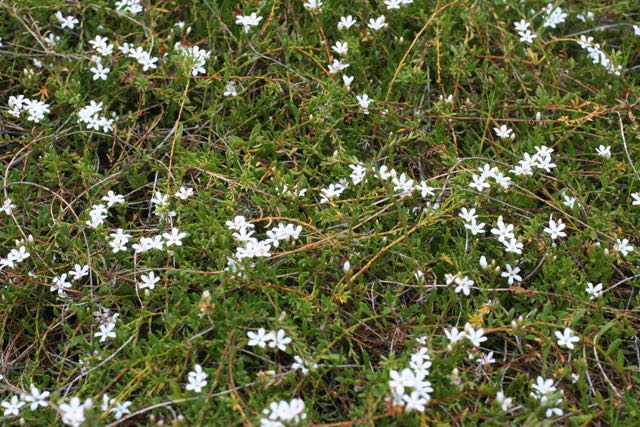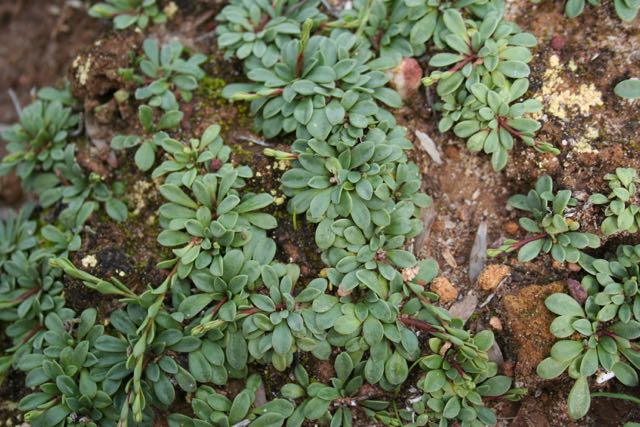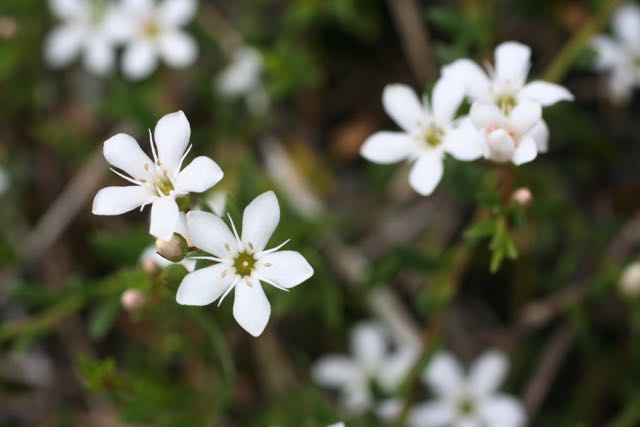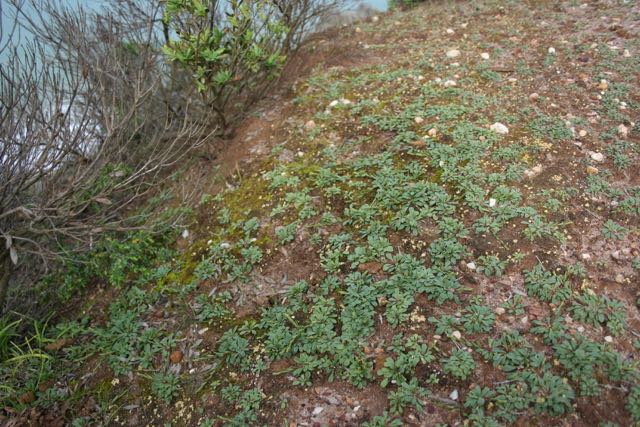



This creeping, erect perennial herb starts out as a rosette but soon develops rhizomes at each new growing point allowing it to spread and create new tufts. It is typically associated with brackish saltmarsh verges where it can form large creeping mats. However, it also tolerates the salinity and poor soil conditions associated with our coastal cliffs, hence its appearance there as a front-line cliff top edge species.
Leaves are initially obovate but become narrower to spatulate as along the stems.
Flowering occurs over a long period with a peak in spring. Flowers can either be white or a pale pink. They are found in the axils of the leaves but also held erect on flowering stems where the new growth continues providing a mix of flowers and pale seed pods with many tiny, dark brown seeds on the same stem.
The two sides of the leaf are different colours